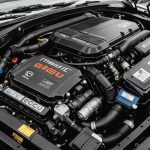As the United Kingdom takes ambitious strides towards reducing harmful emissions, Low Emission Zones (LEZs) are becoming increasingly common. These environmental initiatives aim to improve air quality by restricting or charging more polluting vehicles in certain areas. Naturally, this can pose a particular challenge for owners of older vehicles, which often have higher emissions than their modern counterparts. However, rather than giving up your trusty old vehicle, there are ways to ensure compliance and continue using your vehicle within these zones. This article will provide you with practical advice on how to do just that.
Understand the Regulations
The first step to ensuring compliance with LEZs is to understand the regulations. Each LEZ can have different rules, so it’s crucial to familiarise yourself with the specific requirements of the zones you frequently travel through.
Additional reading : What are the risks and benefits of buying a car at auction in the UK?
What are Low Emission Zones?
Introduced as part of the UK’s strategy to improve air quality, Low Emission Zones are areas where access is restricted for certain types of vehicles, particularly those that do not meet specific emission standards. These regulations are enforced through Automatic Number Plate Recognition (ANPR) cameras, which capture and analyze license plates of vehicles passing through the zone.
Understanding the Standards
Standards for LEZs are based on ‘Euro’ emission standards, a series of European Union (EU) directives stipulating the acceptable limits for exhaust emissions of new vehicles sold in EU member states. In the UK, the most stringent LEZs require vehicles to meet the Euro 6 standard for diesel vehicles and the Euro 4 standard for petrol vehicles. If your vehicle does not meet these standards, you may be required to pay a daily charge to drive within the LEZ.
Have you seen this : What is the best time of year to buy a new car in the UK to get the best deals?
Check Your Vehicle’s Emission Standards
Once you understand the regulations, it’s time to check your vehicle’s emission standards. This will help you determine whether your car falls within the acceptable emission limits for the LEZs you wish to travel through.
Finding Your Vehicle’s Emission Standard
Your vehicle’s emission standard is typically recorded in its V5C registration certificate. If you can’t find the information in the document or if you lost it, you can also use online tools provided by the UK government or vehicle manufacturers to check your vehicle’s Euro standard based on its make, model, and registration date.
What if Your Vehicle Doesn’t Meet the Standard?
If your vehicle doesn’t meet the required standards, don’t panic. There are still options available to you, such as upgrading your vehicle’s exhaust system or installing an emission reduction technology like a Diesel Particulate Filter (DPF) or Selective Catalytic Reduction (SCR) system.
Upgrading Your Vehicle
If it turns out your vehicle doesn’t meet the required emission standards, consider upgrading your vehicle. This doesn’t necessarily mean you need to buy a new car. Instead, you can make modifications to your existing vehicle to reduce its emissions.
Emission Reduction Technologies
Emission reduction technologies such as Diesel Particulate Filters (DPF) and Selective Catalytic Reduction (SCR) systems can be installed in your vehicle to reduce the level of harmful pollutants released into the atmosphere. These technologies can help your vehicle meet the required standards for most LEZs.
Retrofitting Your Vehicle
Another option is to retrofit your vehicle. Retrofit schemes involve upgrading engines or exhaust after-treatment equipment to achieve lower emissions. So, even if your car is not originally designed to meet higher emission standards, this option can help you comply with the LEZ regulations.
Planning Your Routes
Finally, another strategy to ensure compliance with LEZs when using older vehicles is planning your routes carefully. This involves using navigation tools and road maps to avoid driving through LEZs.
Using Sat Navs and Apps
Many satellite navigation systems and smartphone apps now provide information about LEZs and allow you to plan your trip accordingly. By using these tools, you can ensure that your routes bypass LEZs, saving you from potential charges or fines.
Utilizing Park and Ride Schemes
Park and Ride schemes are another useful tool that can help you navigate around LEZs. These schemes allow you to park outside the LEZ and use public transport for the rest of your journey. This could be a viable option if you regularly need to travel into a LEZ for work or leisure.
In sum, owning an older vehicle doesn’t necessarily mean you’ll be left out in the cold by the UK’s Low Emission Zones. By understanding the regulations, checking your vehicle’s emission standards, considering upgrades or retrofits, and planning your routes carefully, you can continue to use your vehicle effectively and responsibly, while also doing your part to help improve the UK’s air quality.
Regular Vehicle Maintenance
Just as you would keep up with standard vehicle care for performance and safety, regular maintenance can also play a key role in meeting emission standards. Routine checks can help keep your vehicle’s emissions at the lowest possible level, aiding you in meeting regulations set by the Low Emission Zones.
Importance of Regular Maintenance
Regular vehicle maintenance is often underestimated in the context of emission control. However, it is a crucial component in ensuring that your vehicle runs efficiently and cleanly. Simple actions such as timely oil changes, checking tyre pressure, and ensuring your engine is tuned can contribute significantly to lowering emissions.
Maintenance Tips for Lower Emissions
For effective emission control, start with a well-maintained engine. Keep your engine properly tuned and ensure the ignition system is in good condition. Regularly check and replace your vehicle’s air filter – a dirty air filter can increase fuel consumption and hence, emissions.
Next, maintain your vehicle’s exhaust system, particularly the catalytic converter. The catalytic converter is designed to reduce harmful emissions from the vehicle’s exhaust. Over time, it can become inefficient due to damage or clogging, leading to higher emission levels.
Lastly, consider using high-quality fuels and lubricants. These can not only enhance your vehicle’s performance but also contribute to cleaner combustion and lower emissions.
Considering Greener Options
While the above tips can help, you might also consider greener alternatives. Transitioning to more environmentally friendly options not only ensures compliance with Low Emissions Zones but also contributes to the larger goal of reducing air pollution and achieving cleaner air quality.
Switch to a Hybrid or Electric Vehicle
As technology advances, more and more people are switching to hybrid or electric vehicles. These vehicles produce lower or even zero tailpipe emissions, making them an ideal choice for navigating through LEZs. If you’re considering purchasing a new vehicle, it might be worth considering a hybrid or electric model.
Carpooling and Public Transport
Another environmentally friendly option is to reduce the use of private vehicles altogether. Carpooling can be a great way to do this. By sharing rides with others, you can reduce the number of cars on the road, thereby contributing to lower emissions. Likewise, using public transport, especially in city centres, can also help reduce the overall air pollution.
Conclusion
In conclusion, while the UK’s Low Emission Zones might seem like a challenge for older vehicles, it is by no means an insurmountable one. By understanding your vehicle’s emission standards, considering upgrades or retrofits, maintaining your vehicle regularly, and considering greener alternatives, you can ensure compliance and contribute towards cleaner air quality. After all, it’s not just about avoiding penalty charges – it’s about doing our part for a cleaner, healthier environment for all. So, next time you’re checking traffic news or planning a trip into a city centre remember to consider the impact of your journey on the environment and choose the cleanest, most efficient way to get there.












